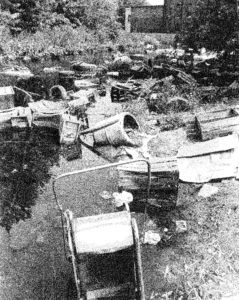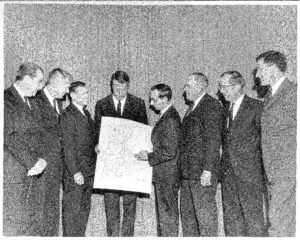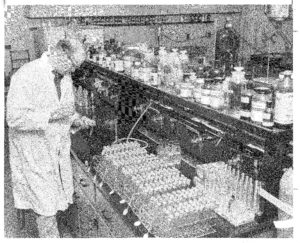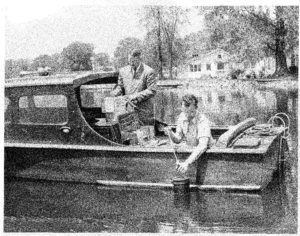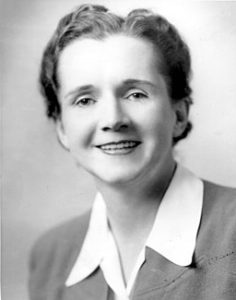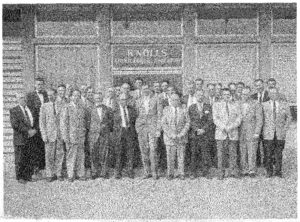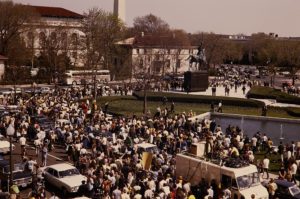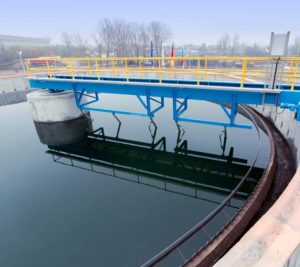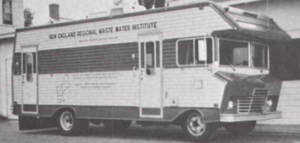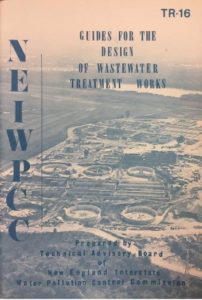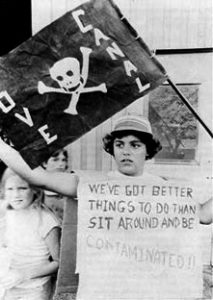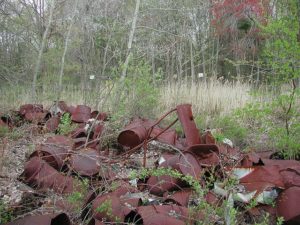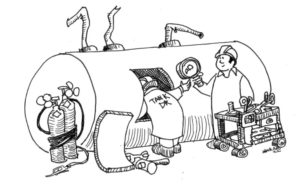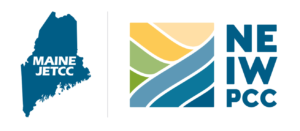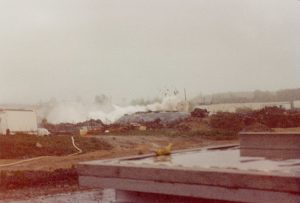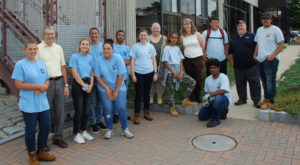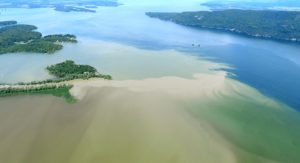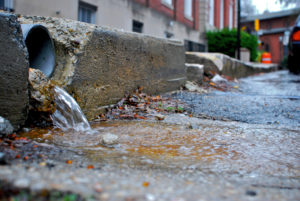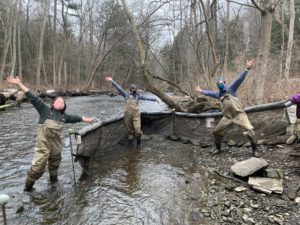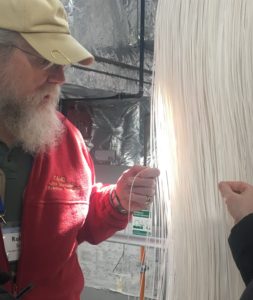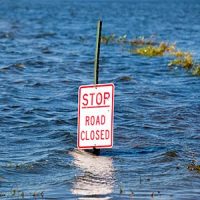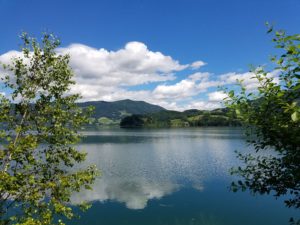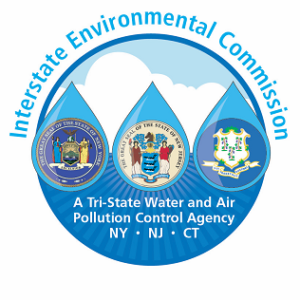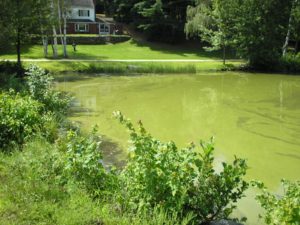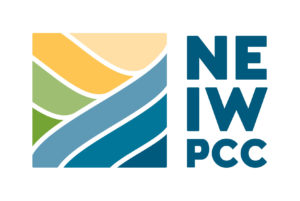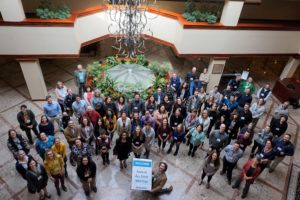Clean Water Timeline
It was not long ago that untreated sewage, industrial wastes, oil slicks, trash and other pollutants fouled our nation’s once beautiful and pristine waterways. This timeline – in honor of NEIWPCC’s 75th anniversary in 2022 – catalogs significant national and regional environmental events and legislation (shown in green), as well as NEIWPCC milestones (shown in blue), to control water pollution and advance clean water in the Northeast.
-
1899
The Rivers and Harbors Act of 1899 is the first federal legislation protecting the nation’s waters, prohibiting the dumping of material and refuse into waters which would impede navigation, without a valid permit. Read more here.
-
Early 1900’s
By the early 1900s, the nation’s waterways had become filthy disregarded resources. With a rapidly expanding population, the country was changing from an agricultural society to one focused on industry. The waterways played a vital role in that evolution, with mills popping up along riverbanks, and the creation of dams and canals to help fuel the booming industrial era. With little legislation or standards and minimal public concern, sewage, trash, agricultural runoff and industrial contaminants were disposed of in creeks and streams.
-
1924
The Oil Pollution Act passes, establishing regulations for coastal navigable waters with regards to intentional fossil fuel discharges from watercraft.
-
July 31, 1947
NEIWPCC Established
Congress recognizes the need for states to coordinate on water pollution control measures, and in 1947 passes legislation allowing for the formation of interstate water pollution control commissions. Connecticut, Rhode Island, and Massachusetts respond immediately by forming NEIWPCC (originally called the New England Interstate Water Pollution Control Commission). Vermont, Maine, New Hampshire, and New York State join shortly thereafter.
NEIWPCC’s early work focused on creating water quality standards and classifications for interstate waters in the region. The extensive water quality sampling and surveying naturally led to issues surrounding wastewater treatment. By the early 1950s, the region saw a rapid pace of construction of municipal wastewater treatment plants.
-
1948
The Federal Water Pollution Control Act of 1948 is the first major law enacted by Congress to address water pollution in the United States. The Act offers state and local governments technical assistance and funding to protect water quality, while limiting federal authority to enforce water pollution control measures.
-
1950
NEIWPCC receives its first federal research grant to fund a study of industrial waste problems in the region.
-
1956
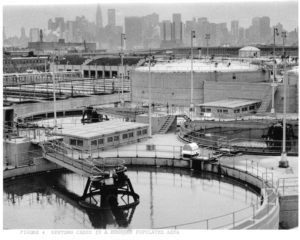 To address growing concerns about the discharge of sewage from boats, NEIWPCC sponsors a conference of pollution control agencies, boat builders, marine equipment makers, and yachting interests at the National Motor Boat Show. Attendees endorse a statement calling on states to consider requiring sewage treatment devices on boats.
To address growing concerns about the discharge of sewage from boats, NEIWPCC sponsors a conference of pollution control agencies, boat builders, marine equipment makers, and yachting interests at the National Motor Boat Show. Attendees endorse a statement calling on states to consider requiring sewage treatment devices on boats.A NEIWPCC analysis shows that 61% of the total population of sewered communities in the region are served by wastewater treatment plants, up from 39% ten years earlier.
-
1960s
From protests to sit-ins to marches, the Civil Rights Movement and Equal Rights Movement – among other social and political causes – are in full swing in the 1960s and 1970s. People are demanding change and becoming aware of the impacts of pollution to human health and on the environment. There is a push for stronger legislation to control the amount of pollution being released into the environment.
-
1965
The Water Quality Act charges states with setting water quality standards for interstate navigable waters.
-
March 15, 1968
NEIWPCC holds its first wastewater training program. Eight courses are conducted in Topsfield, Mass., with operators from all six New England states attending. Learn more here.
-
1969
NEIWPCC launches the New England Regional Wastewater Institute (NERWI), a training school for wastewater treatment plant operators. The school was located on the campus of the Southern Maine Vocational Technical Institute in South Portland, Maine. Eight men complete the institute’s first course, a 12-week program in basic wastewater treatment plant operation.
-
June 22, 1969
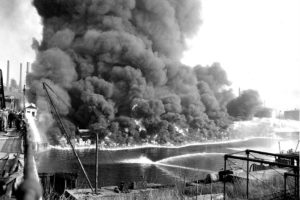
The Cuyahoga River in Cleveland, Ohio burns in 1969. Public outcry over this incident went a long way to convincing Congress to pass the CWA. The Cuyahoga River outside of Cleveland, Ohio catches fire, sparking water pollution control activities. This was the 13th time the river had caught fire since 1868.
-
Dec. 2, 1970
The United States Environmental Protection Agency (EPA) is established with the mission “to protect human health by safeguarding the air we breathe, water we drink and land on which we live.”
-
1971
The training program at NERWI gets a tremendous boost from a grant of more than $82,000 from the U.S. EPA. NEIWPCC significantly expands its public information and education program.
-
Oct. 18, 1972
The Clean Water Act
The 1972 amendments to the Federal Water Pollution Control Act became commonly known as the Clean Water Act, or CWA. The CWA establishes the basic structure for regulating discharges of pollutants into the waters of the United States and regulating quality standards for surface waters. The law set goals and policies to make all waters “fishable and swimmable,” and provides federal funding to construct publicly owned wastewater treatment facilities. Learn more here.
-
1972
The Marine Protection, Research and Sanctuaries Act, or Ocean Dumping Act, prevents unacceptable dumping in oceans.
-
1973
The first edition of “TR16-Guides for the Design of Wastewater Treatment Works” is published by NEIWPCC, becoming an essential manual for the design of wastewater treatment facilities. Learn more here.
-
-
1975
NEIWPCC begins implementing a regional water quality surveillance plan. To determine whether water quality classifications are being achieved, NEIWPCC analyzes data from state and EPA sampling stations in 23 interstate rivers and tributaries.
-
1977
Clean Water Act amendments strengthen controls on toxic pollutants and gives the EPA more authority for controlling wetlands.
-
1978
Residents discover that the neighborhood of Love Canal in Niagara Falls, New York, is contaminated by more than 20,000 tons of buried chemical waste. The pollution is linked to serious health threats such as cancer and birth defects. This environmental disaster was subsequently cleaned up by a Superfund project. Read more here.
-
1980
NEIWPCC’s Commissioners broaden NEIWPCC’s activities to include acid rain and groundwater issues.
-
1980s
In the 1980s, conditions are markedly improved, thanks to a decade of unprecedented legislative activism leading to the passage of laws removing harmful pollutants from the land, air, and water. Pollution is now less visible than in the 1970s, and more complex. Acid rain, hazardous and toxic waste, and groundwater protection emerge as focus areas for NEIWPCC, continuing into the 1990s.
-
Dec. 11, 1980
Congress passes the Comprehensive Environmental Response, Compensation, and Liability Act (CERCLA or Superfund) to clean up uncontrolled or abandoned hazardous-waste sites.
-
1982
A nonviolent, activist movement takes shape in Warren County, North Carolina – a predominantly black community – that was selected by the state for the disposal of soil laced with PCBs, which then leaked into the local water supply. The protest is considered one of the earliest environmental justice actions in the United States.
-
1982
Recognizing the need for interaction among water, air, and solid waste programs, NEIWPCC coordinates the first joint meeting with the Northeast States for Coordinated Air Use Management (NESCAUM) and solid waste program representatives.
-
1985
The first L.U.S.T.Line newsletter is published with support from the EPA’s Office of Underground Storage Tanks, covering national underground storage tanks news.
-
1985
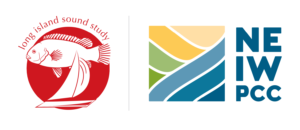 The Long Island Sound Study (LISS) is established. NEIWPCC staff members who work at LISS are helping to implement a management plan for the estuary that includes research, monitoring, and public education and outreach.
The Long Island Sound Study (LISS) is established. NEIWPCC staff members who work at LISS are helping to implement a management plan for the estuary that includes research, monitoring, and public education and outreach. -
1985
Maine’s Joint Environmental Training Coordinating Committee (JETCC) is established. JETCC coordinates training that meets the needs of Maine’s environmental professionals and is managed by NEIWPCC.
-
1987
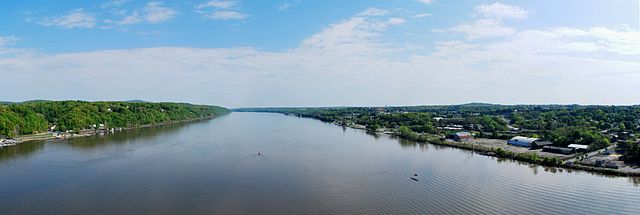 The New York State Department of Environmental Conservation’s Hudson River Estuary Program is established through the Hudson River Estuary Management Act.
The New York State Department of Environmental Conservation’s Hudson River Estuary Program is established through the Hudson River Estuary Management Act. -
1987
The Water Quality Act addresses several nonpoint source pollution issues and creates programs to protect estuaries of national importance, including the Long Island Sound Study.
-
1988
Congress bans ocean-dumping of sewage sludge and industrial waste.
The EPA sets standards for underground storage tanks.
-
1990
The Lake Champlain Basin Program (LCBP) is established, to restore and protect the lake’s water quality, fisheries, wetlands, wildlife, recreation, and cultural resources.
-
1990
The Youth and the Environment Program (YEP) launches, introducing high school students to careers in the environmental field.
-
1990
NEIWPCC establishes a Nonpoint Source Pollution Workgroup and coordinates the first annual Nonpoint Source Conference.
-
1990
The Phase I Municipal Separate Storm Sewer System (MS4) permit program is implemented to protect our rivers, lakes and streams from polluted stormwater runoff. Learn more.
-
1991
NEIWPCC’s underground storage tank (UST) video, “What Do We Have Here? An Inspector’s Guide to Site Assessment at Tank Closure,” wins a Gold Screen Award from the National Association of Government Communicators.
-
1992
NEIWPCC forms a Stormwater Workgroup to strengthen interstate efforts to deal with stormwater discharges, as well as a CSO Workgroup to collaborate on controlling water quality impacts from combined sewer overflows. NEIWPCC participates in the kickoff of the Merrimack River Initiative, which aims to coordinate the efforts of various agencies to protect the river.
-
Sept. 30, 1993
The National Environmental Justice Advisory Council, a federal advisory committee to the EPA, is formed. The Council provides advice and recommendations on environmental justice topics and provides a forum for discussions about integrating environmental justice with other EPA initiatives.
-
1995
EPA’s Brownfields and Land Revitalization Program outlines the way communities address and manage contaminated property.
-
1996
The Drinking Water State Revolving Loan Fund (DWSRF) is established by the 1996 amendments to the Safe Drinking Water Act (SDWA). The DWSRF is a financial assistance program to help water systems and states to achieve the health protection objectives of the SDWA.
-
1999
Partnership with the New York State Department of Environmental Conservation’s Hudson River Estuary Program begins. The program helps people enjoy, protect, and revitalize the Hudson River and its valley.
-
2000s
After the September 11, 2001 terrorist attacks on the World Trade Center in New York City, water-related security measures are heightened. In conjunction with the EPA and the New England Water Environment Association, NEIWPCC develops and conducts security and emergency preparedness training workshops for wastewater facilities in the region. Nationally, growing concerns about climate change are front and center in the news. There is also an increased focus on pharmaceuticals, personal care products, and PCBs in drinking water.
-
-
2002
NEIWPCC begins coordinating and hosting the Northeast Onsite Wastewater Short Course and Equipment Exhibition. a “one-stop” training/conference event for Massachusetts onsite wastewater professionals and wastewater operators.
-
2003
NEIWPCC assists EPA Region 2 in managing the New York-New Jersey Harbor & Estuary Program (HEP). HEP is an ongoing effort to develop and implement a consensus driven plan to protect, conserve and restore the estuary.
-
2004
The NEIWPCC Regional Research Initiative is established to advance water research in the Northeast. A Mercury-Fish Workgroup is also formed.
-
2007
NEIWPCC coordinates with the Northeast states to submit the Northeast Regional Mercury TMDL plan to the EPA. Learn more.
-
2010
“Gauging the Health of New England’s Lakes and Ponds” is published. The study evaluates the overall health of the region’s lakes and ponds and identifies when steps need to be taken to restore water body integrity. It is intended for use by a broad group of stakeholders, managers, and policymakers throughout the region.
-
2011
The EPA launches the Urban Waters Federal Partnership, aimed at reconnecting urban communities with their waterways by improving coordination among federal agencies.
-
2014
“Regional Clean Water Guidelines for Fertilization of Urban Turf” is published as part of the Northeast Voluntary Turf Fertilizer Initiative. The goal is to minimize the contribution of lawn fertilizers to polluted runoff and water quality problems.
-
2015
The Long Island Sound Study embarks on a new Nitrogen Reduction Strategy, focusing on removing nutrient pollution from urban stormwater, turf fertilizer, and wastewater treatment systems.
-
2016
NEIWPCC releases the smartphone app “Bloomwatch” with EPA Region 1 and CitiSci.org to monitor cyanobacteria blooms. Learn more here.
-
2020s
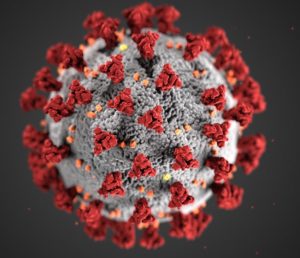 In 2020, COVID-19 forces NEIWPCC staff to pivot to remote work and pause some projects and programs. The pandemic also puts a spotlight on how essential water and wastewater workers are in ensuring that communities have clean water. Emerging issues such as PFAS, or “forever chemicals,” in water sources and biosolids present new challenges for potential human health and environmental risks.
In 2020, COVID-19 forces NEIWPCC staff to pivot to remote work and pause some projects and programs. The pandemic also puts a spotlight on how essential water and wastewater workers are in ensuring that communities have clean water. Emerging issues such as PFAS, or “forever chemicals,” in water sources and biosolids present new challenges for potential human health and environmental risks. -
2020
NEIWPCC undergoes a rebranding process and develops a strategic plan outlining its mission, vision, and values. Learn more here.
-
Nov. 5, 2021
Congress passes a $1.2 trillion bipartisan legislative package, H.R. 3684, the Infrastructure Investment and Jobs Act. Approximately $550 billion of the total is new funding, of which almost $51 billion is allocated to much needed drinking water, wastewater, and stormwater infrastructure funding.
-
2022
NEIWPCC Today
NEIWPCC is currently comprised of more than 110 staff throughout the Northeast, with headquarters in Lowell, Massachusetts, a satellite office in South Portland, Maine, and locations within state agencies and program partners. Twenty active workgroups facilitate regional collaboration and state-federal engagement on topics ranging from source water protection to wetlands.
NEIWPCC provides administrative, program, and budgetary support to several place-based Program Partners: The Lake Champlain Basin Program, Long Island Sound Study, and the Hudson River Estuary Program and the Hudson River National Estuarine Research Reserve.
Current Water Program Priorities include: Clean Water Act Reauthorization; Contaminants of Emerging Concern/PFAS; Infrastructure and State Revolving Fund; Training and Certification; and, Watershed Planning and Waterbody Protection.
NEIWPCC’s work and role in the Northeast and national water industry is more vital than ever, as current problems demand action and new, complex challenges arise. Despite the changes over the decades, NEIWPCC remains committed to the same vision set 75 years ago: clean and sustainable water for all.
